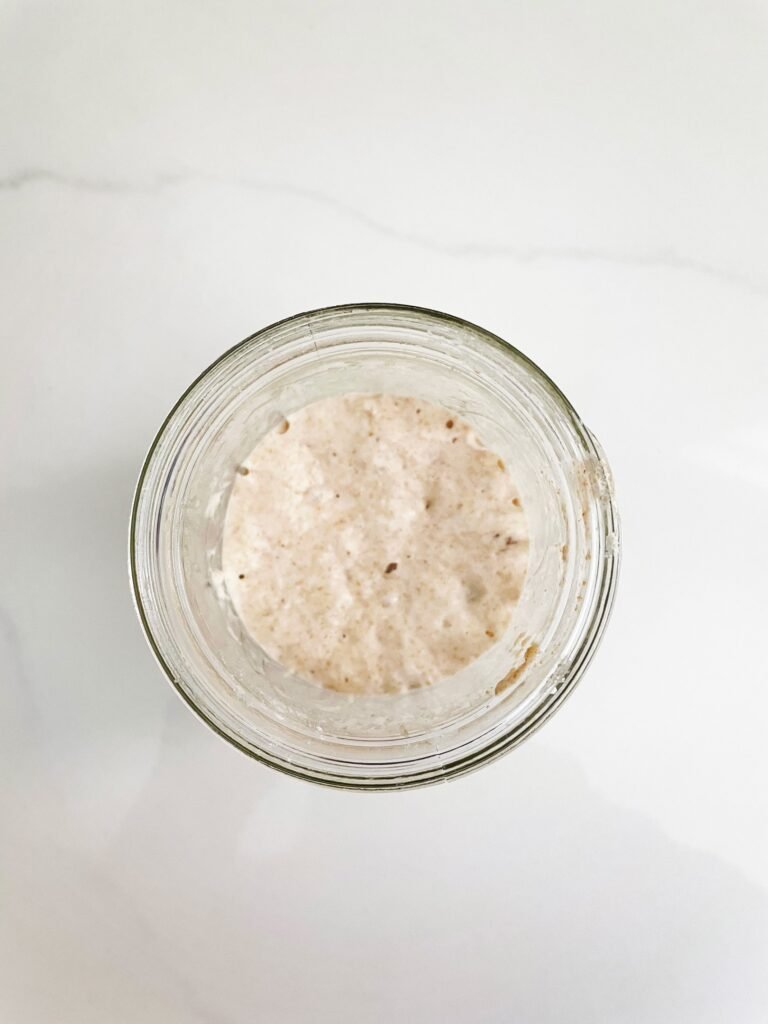Sourdough Starter: Step-by-Step Guide

What You’ll Need:
- Whole grain flour (rye or wheat)
- Lukewarm water (26–27°C / 78–80°F)
- Large glass or ceramic container
- Cloth or plastic wrap
Day 1: Mix Your Starter
- Combine 60g flour with 60g lukewarm water in your container.
- Stir until smooth, like a thick batter.
- Cover loosely and leave in a warm place (21–24°C / 70–75°F) for 24 hours.
Day 2: First Feeding
- You may see bubbles, or not—that’s normal.
- Discard half of the starter (~60g).
- Add 60g flour + 60g water, stir well.
- Cover and let sit for another 24 hours.
Day 3: Signs of Life
- Look for bubbles, a slight rise, or a tangy smell.
- Discard half and feed with 60g flour + 60g water.
- Cover and let sit for 24 hours.
Day 4 & Beyond: Building Strength
- Repeat discarding and feeding daily.
- Within a week, your starter should double in volume within a few hours of feeding.
- If a liquid layer (“hooch”) forms, it’s just your starter saying it’s hungry—stir it in or pour it off.
Maintenance Tips
- Always reserve at least 60g before baking so your starter can continue.
- For frequent baking, keep at room temperature and feed daily.
- For occasional baking, store in the fridge and feed weekly.
- Use clean utensils to avoid contamination.
- Discard and restart if you see mold or off smells.
The Science Behind Your Starter
When flour and water meet, wild yeast and lactic acid bacteria start feeding on sugars:
- Yeast: Produces CO₂ → dough rises
- Bacteria: Produce lactic & acetic acid → tangy flavor
- Enzymes: Break down starches into sugars → fuel for yeast & bacteria
Key Tips:
- Whole grain flours provide more nutrients and microbes.
- Temperature matters: Too cold → slow fermentation; too hot (>35°C/95°F) → kills microbes.
- Discarding: Keeps a healthy balance without growing your starter exponentially.
- Hooch: A sign your starter is hungry, not harmful.
Why Patience Pays Off
A strong starter takes time, but once it’s active, it can reliably leaven bread and give your sourdough that perfect tang. Maintaining it is part science, part art—and completely worth it.
Optional: Dive Deeper into the Science
- Saccharification: Enzymes convert starches into simple sugars for yeast to eat.
- pH balance: The acids created keep harmful microbes away.
- Symbiotic culture: Yeast and bacteria coexist to create flavor and rise.
Pro Tip: Start small, be consistent, and enjoy watching your starter come alive!